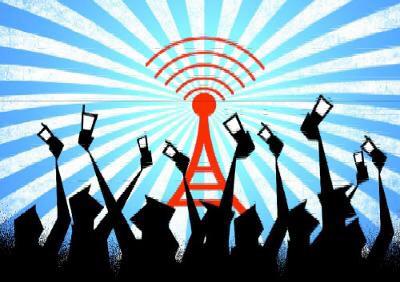![]()
In State v. Muhammad, the WA Supreme Court held that a cell phone “Ping” is a search under the WA Constitution and the Fourth Amendment.
BACKGROUND FACTS
Police investigated the rape and murder of Ms. Ina Claire Richardson. The night she was killed, Richardson had shopped at a local grocery store. Security cameras recorded her walking through the parking lot toward a distinctive maroon sedan. Minutes later, the vehicle’s headlights switched on, and the vehicle exited the parking lot, drove onto an access road behind a nearby hotel, and parked. Two individuals appeared in the car, which remained parked for approximately one hour. Police officers later discovered a condom wrapper at this location.
On November 10, 2014, a law enforcement officer recognized the unique features of the maroon sedan from the security footage and conducted a traffic stop. The driver was Mr. Muhammad. During the stop, the officer asked Muhammad about his vehicle, asked him whether he had gone to the grocery store or had been in the area on the night of the murder, and obtained Muhammad’s cell phone number before letting him go.
After this encounter, law enforcement “pinged” Muhammad’s cell phone without a warrant. The ping placed Muhammad in an orchard in Lewiston, Idaho. Washington and Idaho police arrived, seized Muhammad’s cell phone, and impounded his car. Police also sought and obtained a search warrant for Muhammad’s car.
Muhammad was taken into custody. He denied any involvement in the rape and murder and eventually asked for legal counsel. Police later searched Muhammad’s car. They discovered blood on the passenger seat; in the trunk, they found latex gloves and other incriminating evidence. The police also discovered condoms in the trunk of the sedan. These condoms matched the condom wrapper found by the hotel service entrance. Finally, The blood was matched to that of Ms. Richardson. Autopsy swabs of Richardson’s vagina and fingernails revealed a limited amount of DNA (deoxyribonucleic acid) matching Muhammad’s profile.
The police obtained a search warrant for Muhammad’s cell phone records. These calls he made on the night of the incident connected to multiple cell towers, indicating that Muhammad was moving. One such cell tower placed Muhammad in the location where Richardson’s body was found.
Muhammad was arrested and charged with rape and felony murder.
At trial, Muhammad moved to suppress all physical evidence collected as a result of the warrantless ping of his cell phone. After a CrR 3.6 hearing, the trial court issued a written order denying the motion based in part on exigent circumstances. A jury convicted Muhammad as charged. Muhammad appealed his convictions.
COURT’S ANALYSIS & CONCLUSIONS
- The Cell Phone “Ping” Tracking Was A Warrantless Search.
The WA Supreme Court held that the “ping” tracking of Muhammad’s cell phone was indeed a search.
“When law enforcement loses sight of a suspected individual, officers need merely ask a cellular service carrier to ping that individual’s phone and almost instantaneously police acquire data on the suspect’s past and present location,” said the Court. “This location tracking technique does substantially more than binoculars or flashlights; it enables officers to see farther than even the walls of a home—it pierces through space and time to pinpoint a cell phone’s location and, with it, the phone’s owner.”
The Court further reasoned that this type of search was exactly what happened to Mr. Muhammad. “The police could not locate Muhammad,” said the Court. “They knew only that he had likely left the area after officers returned to his apartment complex and found the maroon sedan had disappeared. As Muhammad pointed out, the officers’ senses alone could not locate him unless they converted his phone into a tracking device,” said the Court.
“Historical and real-time CSLI, like text messages, reveal an intensely intimate picture into our personal lives. Our cell phones accompany us on trips taken to places we would rather keep private, such as the psychiatrist, the plastic surgeon, the abortion clinic, the AIDS treatment center, the strip club, the criminal defense attorney, the by-the-hour motel, the union meeting, the mosque, synagogue or church, the gay bar and on and on.”
2. Exigent Circumstances Exist to Justify the Warrantless Cell Phone Search.
The Court said that because the State failed to get a warrant prior to pinging Muhammad’s cell phone, the evidence obtained pursuant to the improper search should be suppressed unless the State proves that an exception to the warrant requirement applies. “Exigent Circumstances” is one of those exceptions.
To prove exigent circumstances, the State must point to specific, articulable facts and the reasonable inferences therefrom which justify the intrusion. “The mere suspicion of flight or destruction of evidence does not satisfy this particularity requirement,” said the Court.
The Court reasoned that under the facts of this case, the State has proved exigent circumstances—specifically that Muhammad was in flight, that he might have been in the process of destroying evidence, that the evidence sought was in a mobile vehicle, and that the suspected crimes (murder and rape) were grave and violent charges.
With that, the WA Supreme Court affirmed Muhammad’s conviction.
Please read my Search and Seizure Legal Guide and contact my office if you, a friend or family member face criminal charges and the evidence was obtained through a warrantless search of cell phone data and/or location. It is imperative to hire an experienced criminal defense attorney who is well-versed in the law regarding search and seizure of this evidence.







